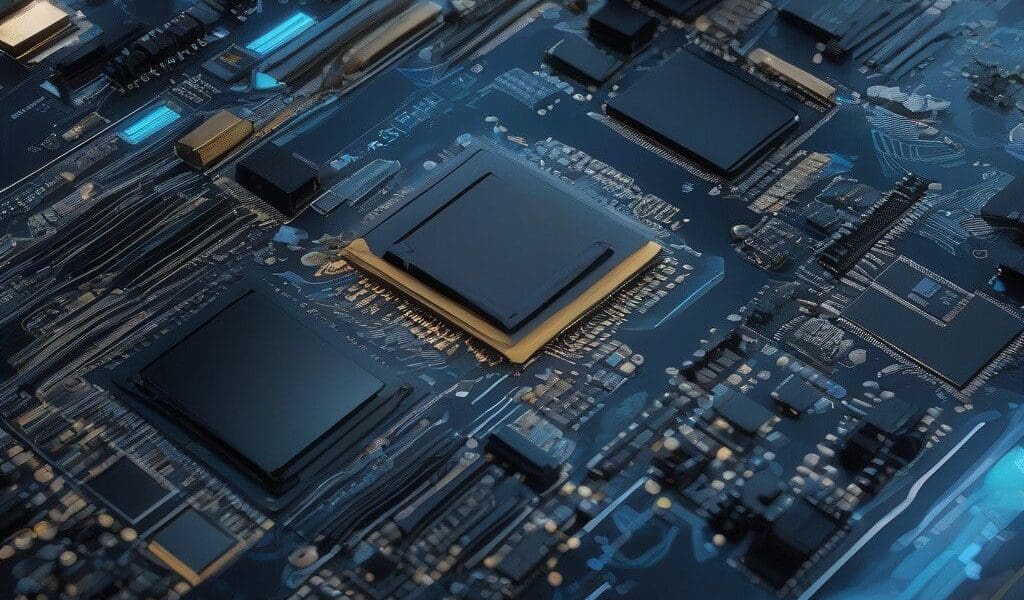NAND Flash Technology Sees Major Advancements: Meeting the Demands of AI
The storage market is experiencing significant advancements in 2024, particularly in the realm of NAND flash technology. Industry leaders like Samsung, Micron, and SK Hynix are innovating rapidly to keep pace with increasing demands, particularly driven by the rise of artificial intelligence (AI). This article examines the latest trends in NAND flash technology and their implications for the storage market.
Samsung has recently begun mass production of its 9th generation QLC (Quad-Level Cell) V-NAND. This new model boasts impressive improvements in bit density and performance. The technological enhancements also improve data retention while substantially lowering power consumption, essential for addressing the need for efficient storage solutions in AI applications. In a world where energy efficiency is becoming a priority, Samsung’s focus on minimizing power usage aligns perfectly with industry needs.
Micron is not trailing far behind, as it continues to roll out high-performance SSDs featuring 9th-generation TLC (Triple-Level Cell) NAND technology. These SSDs deliver remarkable data transfer speeds, making them suitable for applications in various sectors, including gaming, enterprise, and AI. Meanwhile, SK Hynix is targeting data centers with its own line of high-performance SSDs, reflecting a broader industry trend of optimizing storage solutions for increased data demands.
The surge in demand for storage capacity is visible in market research forecasts, which suggest that AI-related SSDs will surpass 45 exabytes in 2024. The share of AI SSDs within the NAND flash market is anticipated to grow significantly as companies strive to meet the burgeoning requirements of data-centric technologies. The market’s response to the rising demands underlines a pivotal shift toward higher-capacity SSDs, with manufacturers prioritizing both TLC and QLC technologies in their product offerings.
Despite encounters with challenges in the PC and smartphone sectors, the revenue from NAND flash sales has continued to rise, fueled by the strong demand from the AI industry. Companies are ramping up production capacity to prepare for an escalating need for efficient storage solutions, particularly in data centers and AI applications. This readiness not only positions manufacturers favorably in a competitive landscape but also reinforces NAND flash memory’s critical role in advancing technology.
Take a closer look at some examples of how these advancements are groundbreaking. Samsung’s 9th generation V-NAND is reportedly capable of processing data at unprecedented speeds while maintaining lower energy consumption, a feat that is particularly appealing to tech companies in AI. This enhancement represents a leap in both technology and sustainability, offering a dual advantage that is increasingly rare in today’s tech market.
In the case of Micron, its SSDs are particularly beneficial for sectors requiring rapid data retrieval and storage, such as gaming and financial services, where milliseconds can impact performance significantly. Companies investing in these technologies stand to gain a competitive edge, as faster and more reliable data access becomes a prerequisite in today’s digital landscape.
Furthermore, SK Hynix’s SSDs tailored for data centers underscore the growing necessity for specialized storage solutions that can handle increasingly complex workloads. By focusing on data centers, SK Hynix is tapping into a lucrative market, as the cloud and data-driven initiatives become integral to business operations worldwide.
As the demand for AI-driven technologies continues to grow, the NAND flash sector is undergoing a transformative period. Market dynamics indicate an ongoing shift towards more sophisticated and efficient storage solutions, driven by the demands of AI and data applications. Companies not adapting to these changes risk falling behind in a fast-paced, technology-oriented environment.
In this context, it is worth noting that the advancements in NAND flash technology are not only about increasing capacity but also about enhancing the overall efficiency and performance of storage solutions. As we look to the future, the emphasis on sustainability within the tech industry points to a clear direction: innovations that accommodate an ever-demanding data landscape will lead the way.
The NAND flash market’s evolution reflects its central role in the ongoing journey towards more effective and intelligent technology solutions. As AI continues to shape various sectors, the importance of advanced storage solutions cannot be overstated. Companies that recognize and adapt to this transformation will be well-positioned for success.








